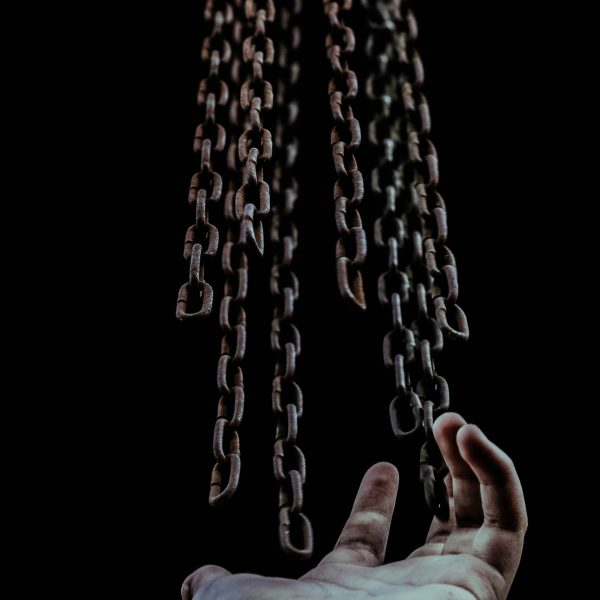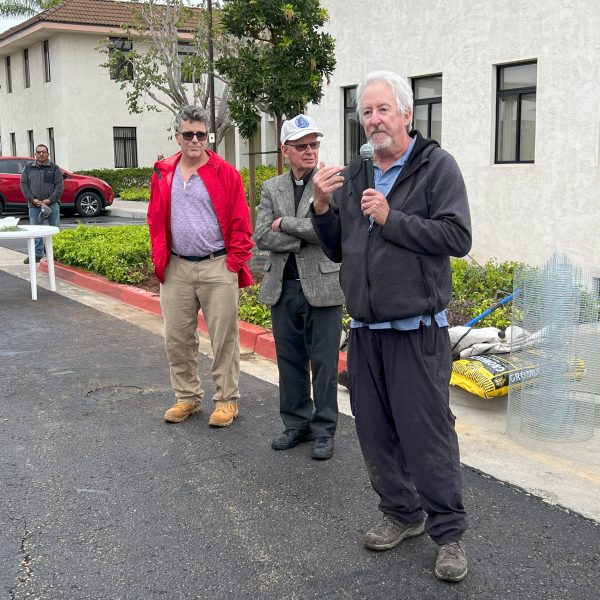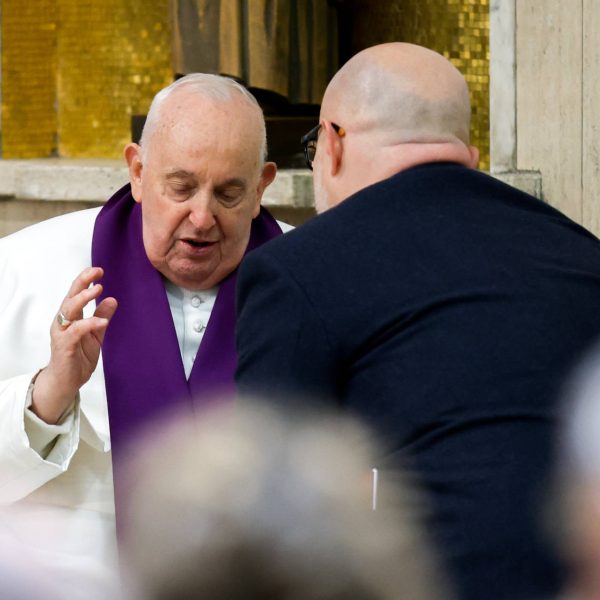Father Sam Keyes is parochial administrator of St. Augustine of Canterbury Catholic Church. The parish is part of, not the Diocese of San Diego, but the Personal Ordinariate of the Chair of St. Peter.
The ordinariate was established in 2012 as essentially a diocese for former Anglicans in North America who desired full communion with the Catholic Church while retaining aspects of their rich Anglican traditions. One of three such ordinariates worldwide, it is headed by Bishop Steven Lopes and based in Houston.
Father Keyes, 40, was formerly an Anglican priest. He was ordained to the Catholic priesthood on June 29 at the Cathedral of Our Lady of Walsingham in Houston. He has taught theology at John Paul the Great Catholic University (also known as JP Catholic) since July 2019. With his wife, Gretchen, he has four children and another due in August.
As a newly ordained Catholic priest, Father Keyes will celebrate his first public Mass in the San Diego area at 1 p.m., July 10, at Our Lady of Mt. Carmel Parish in Rancho Peñasquitos.
St. Augustine of Canterbury Parish currently holds its Sunday Masses at 10 a.m. at an outdoor venue behind JP Catholic’s Student Life Center in Escondido.
Question: What distinguishes ordinariate parishes from other Catholic parishes?
Answer: The first thing that you’re going to notice in an ordinariate parish is that we have our own distinct liturgy. Sometimes, people look at us and think it looks a lot like the Extraordinary Form (the pre-Vatican II Latin Mass), and we tend to celebrate it ceremonially very much like the Latin Mass, with the priest and people facing the same direction. But then, there are other elements that are straight out of the newer, post-Vatican II Missal. It is in a very beautiful English, with the “thees” and “thous” and the more formal language.
Among the parishioners, you’re also going to find a core membership which was originally Anglican. There’s a real deep orthodoxy there. They’ve actively sought communion with the Catholic Church and, in many cases, made hard sacrifices to get to that place.
Our communities also tend to be smaller. Your average Anglican church is very small, and so there is an emphasis on that kind of closer community.
What is your flock like at St. Augustine of Canterbury Parish?
The original parishioners came out of St. Michael’s Episcopal Church in Carlsbad and were received into the Catholic Church at a big liturgy in San Juan Capistrano.
We have about 15 registered families. The bulk of them are from North County, but we do have people who come from farther south. We have one family who comes all the way from El Cajon every week, which is a long drive.
All in all, the attendance at Sunday Mass has hovered around 60 in the last few months. We have a lot of visitors. One of the things I’ve always noticed is we’re small, but every week, there’s some new person who’s just popping in to see what it’s all about.
What have you found most challenging – and most exciting – about leading a fledgling parish community?
We don’t have a staff. We don’t have a building; we are working on an agreement with JP Catholic to inhabit their chapel building. Until recently, we didn’t even have a budget.
Those are some of the challenges. Many of those, in a way, are also exciting opportunities in that we have this chance to build something.
Most Catholic parishes are pretty large, and they have very well-established ministries. It’s much easier to be anonymous at the back of the church when there are a thousand people there, and then just kind of slip out. Whereas for us, every person matters. We’re building something from scratch and people have the opportunity to be involved in building that future, which I think is really exciting.
Can you share the story of your own spiritual and vocational journey?
I grew up a Southern Baptist. After going to England and stumbling into Canterbury Cathedral in the middle of Evensong (Evening Prayer service), I was just completely blown away by it. From that moment, I was drawn in that direction.
In 2006, I entered the master’s program at Duke Divinity School. That was when I more formally became an Episcopalian. In the process of that study, I realized I was drawn to the priesthood.
I was ordained an Anglican priest in 2012. Even at the time, I was very much drawn to the Catholic Church. I had studied the Catechism. I didn’t really find anything objectionable. Doctrinally, I was really already there. It’s just that I didn’t feel like I could make that leap because (as a “high church” Episcopalian) I felt like I was already Catholic.
By 2015, Gretchen and I were very well aware of the ordinariate. We found it very attractive. We had friends who were part of it, many of my priest-mentors from the Episcopal Church had already become Catholic, so it was starting to feel inevitable.
When we came into the Church in June of 2019, I had no certainty that I would be able to pursue the priesthood. I was willing to give that up, both for the sake of the unity of the Church and for the salvation of my own soul.
For those first-timers who will attend your first public Mass in San Diego on July 10, what do you hope they take away from their first ordinariate liturgy?
Pope Benedict XVI in “Anglicanorum Coetibus” (the papal document from late 2009 that established the ordinariates) spoke about our patrimony as “a treasure to be shared” with the whole of the Catholic Church.
The English tradition is really big on this combination of musical, and liturgical, and visual aesthetics. I hope people just come away thinking, “Wow! That was really beautiful.”
Maybe for some, it will inspire them to come visit the ordinariate or invite their Protestant friends to it. But maybe, it’s simply something that they take back to their own parish, that kind of memory of something beautiful that can expand the imagination of what the worship of God can look like.



